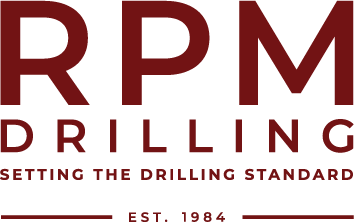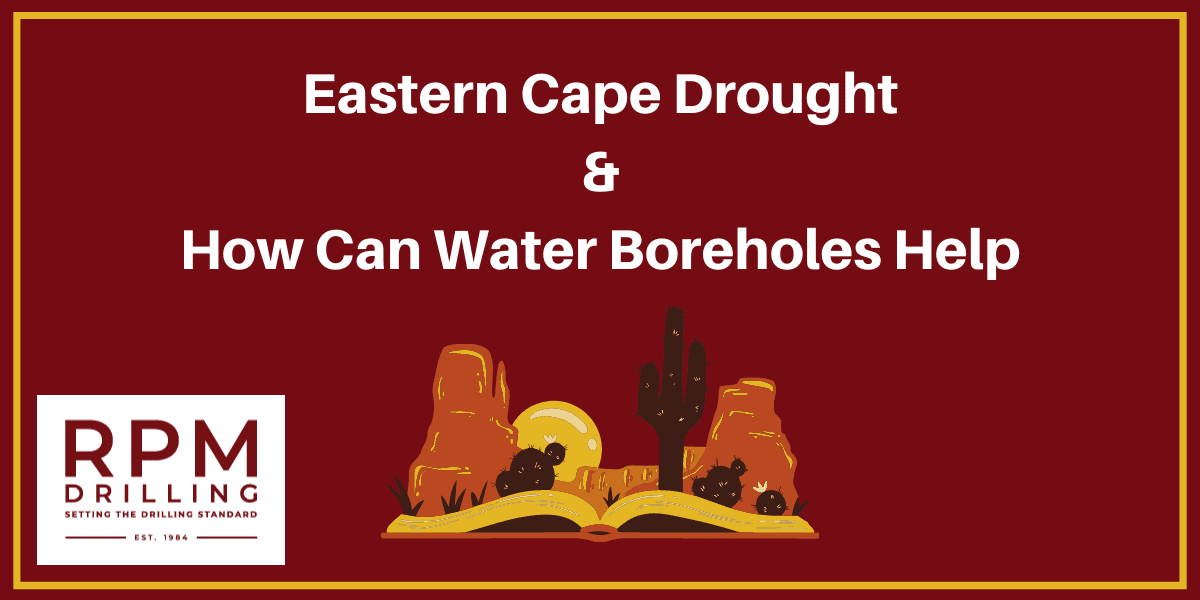Borehole Drilling In Eastern Cape & How it Can Help With The Drought
Borehole Drilling In Eastern Cape & How it Can Help With The Drought
As of October 2019, the Eastern Cape Province has been declared a Drought Disaster Region.
This should come as no surprise, as the entire country has been suffering the effects of a severe drought since 2015, and yet some South Africans have been shocked to find that severe pressure is being put on their local water resources.
The country’s water crisis is, however, being caused not only by decreased rainfall, but also by increased demand, poor preparation for water-scarce months or seasons, and poor supervision of water usage by local and national governments.
While we can usually rely on the spring rains to fill our dams an extra 25-35%, data shows that that’s highly unlikely to happen this year.
Unfortunately, this means that drought relief, for the Eastern Cape specifically, is not likely to arrive anytime soon.
Here are some factors that played a role during the last few years:
Inconsistent Rainfall
It is interesting to note, that despite the Eastern Cape being one of the primary provinces involved in agriculture in South Africa, very little research has been done to establish why their rainfall is so inconsistent, and how these inconsistencies may affect the availability of water resources in the area in the short and long term.
Not only would such studies inform agricultural planning in the region, but, as a province with several rural settlements that are vulnerable not only to drought but also the effects of flash-flooding, it may help residents plan to save not only their livelihoods but their homes in times of extreme weather events – if, that is, these extreme weather events can be predicted.
Struggling Agriculture
Some of the inconsistencies in rainfall in the Eastern Cape can be attributed to purely geographical reasons, as the Eastern Cape is such a large province that it spans more than one “meteorological (or “rainfall”/climate) zone”, but this does still not explain the severity of the recent drought, or the decrease in spring rainfall.
With water scarcity on the rise, export agricultural products from the region, including fruit and livestock, are suffering.
At the moment, two of the Eastern Cape’s dams’ levels are the lowest they’ve been since 1985!
Not only is the drought costing local farmers their livelihoods, but it has also cost the government hundreds of millions of rands in drought relief efforts.
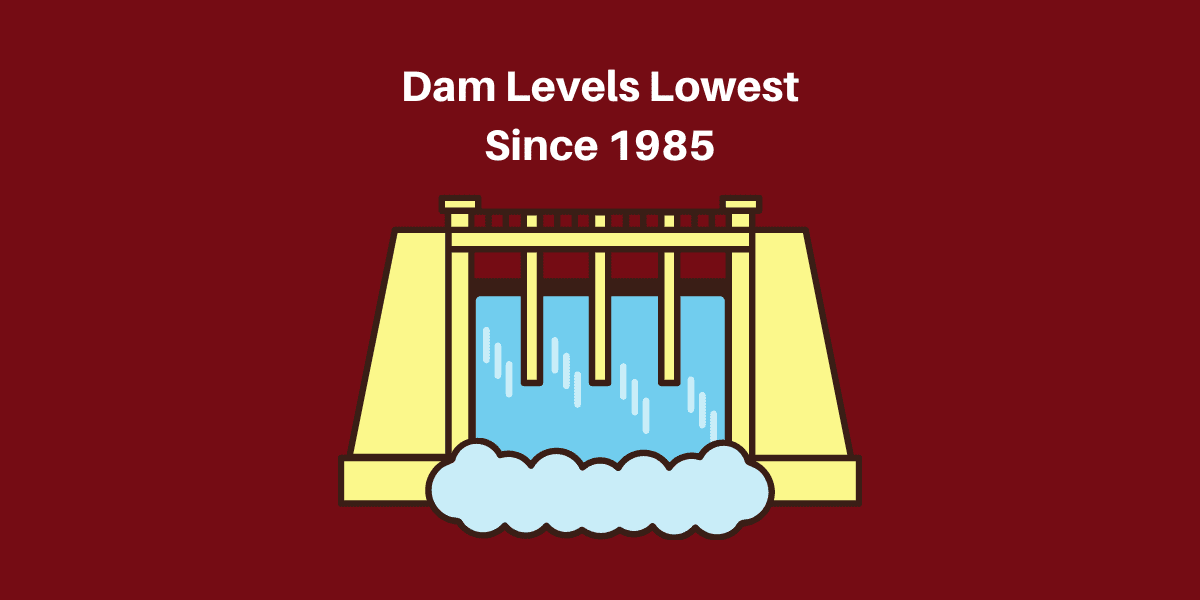
Lack of Preparation
Over the past 5 years, several major towns in the Eastern Cape have had to adhere to strict water restrictions after they came within inches of experiencing their very own threat of a “Day Zero”, when the taps would run dry.
Ultimately, the entire region is permanently at risk of water insecurity until such time that proper research is conducted into the rainfall and weather patterns in the area. At this point in time, the data does not exist to allow residents of the province to properly prepare for or predict future drought and/or ongoing water shortages.
Therefore, it is up to the individual to take caution and what preparatory measures he or she can to cope with the potential for long term water shortages not only in the Eastern Cape Province, but in the country as a whole.
How can RPM Drilling help you?
At RPM Drilling, we believe that knowledge is power, and tips for saving water translate into a real-world impact if you apply them.
There are plenty of practical ways that you too can save water every day; in fact, we’ve listed 18 water saving tips for you in a post that you can access right here.
Still, perhaps the easiest way to reduce your reliance (and personal burden) on the municipal water supply is to invest in your very own domestic or commercial water borehole.
Not only can borehole water be far healthier for you to consume because it is rich in natural minerals and hasn’t been altered by any man-made chemical additives (like the chemically treated water from the municipal supply has been), but using borehole water around the house or at your place of business is also incredibly water-wise.
Since borehole water can be used for anything, including irrigation, it really is the perfect solution to providing for all your domestic and commercial water requirements.
Not only will a borehole save you money in the long run, but you’ll automatically increase your property value.
Sounds like a win-win!
But remember: a water borehole’s benefits to you are reliant on it being sunk and maintained the right way.
That’s why it’s so important to get the best people for the job, RPM Drilling!
Also read about the benefits of getting a water borehole.
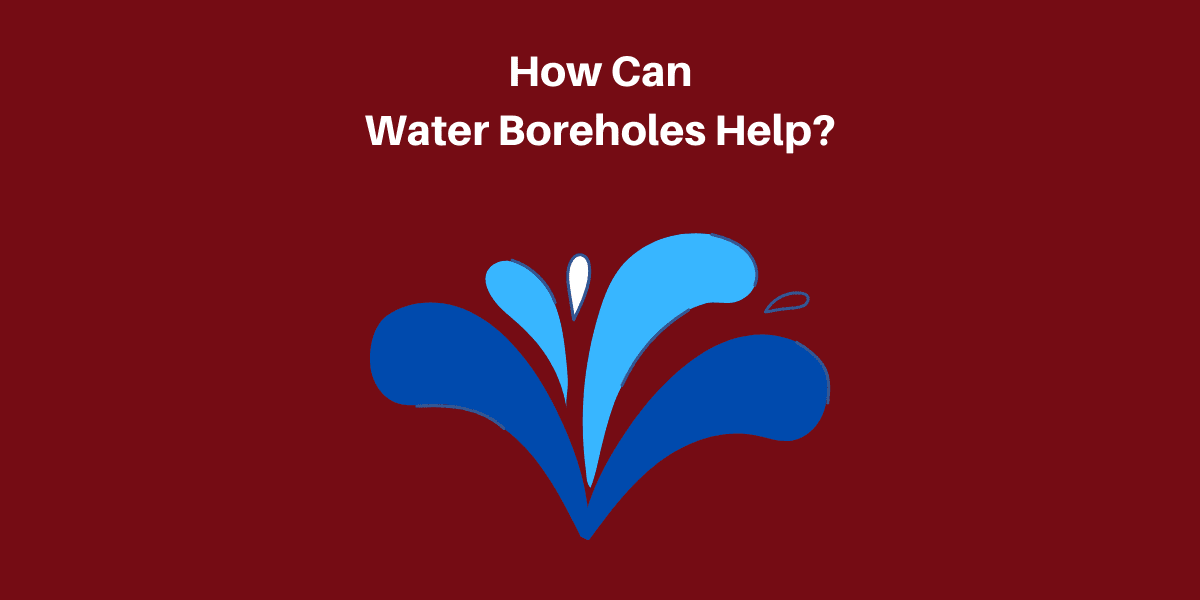
What is involved in borehole drilling?
Step 1 – Hydro-geologists site the borehole
First and foremost, we need to determine where the water is, and how we’re going to get to it.
That’s why we employ hydro-geologists!
These are the guys who make use of a variety of borehole drilling methods to assess the geophysical properties of the underlying area, and they also help us ensure that we’re not drilling into natural hazards or any man-made infrastructure (such as pipelines or cables).
Step 2 – Drilling and construction
Once the hydro-geologists have helped us to prepare the way for the borehole drilling, we construct the borehole.
Of course, this is not a simple task and unfortunately, an eternal supply of water won’t just magically surge to the surface following the drilling.
For this reason, there remain some very important steps to follow and processes to be completed.
Once the borehole has been drilled, for example, the necessary unstable lengths of the borehole need to be steel cased in order to strengthen the ‘tube’.
Step 3 – Gauging the borehole’s yield
For us to most accurately determine the yield of a domestic water borehole, we need to perform an aquifer test.
This involves installing a test pump in order to pump borehole water for a fixed set of variables; i.e. for a given time at a given rate, and then evaluating the test’s impact on the borehole’s water level.
Essentially, the borehole’s maximum yield is achieved by increasing the abstraction rate and securing optimum drawdown of water in the borehole.
Step 4 – Pumping and piping the borehole
Finally, the kind of pumping system and piping installed in your water borehole will largely depend on the intended use of the borehole water.
For instance, household and agricultural use will require the installation of different kinds of pumps and piping.
For more information on this particular step, or to make an appointment to start the drilling process, you can get in touch with us.
Read our full article on our Drilling Process.
Conclusion
Our water resources are perhaps the most essential component to life on earth, so it’s vital that we manage them wisely both now and in the future.
Not only do we as South Africans regularly face drought and water shortages, but access to fresh drinking water is also impacted by other environmental and social ills like pollution and littering.
This is why it is so important that we all educate ourselves on sustainable water resource management; so that we can ensure a stable supply of clean water for all South Africans.
How can you help to relieve the pressure on the water demand in your region?
Think about this carefully and encourage others to do the same.
We all need to be water-wise, conscious consumers who take caution and prepare for the future.
More so, we all need to actively choose to safeguard the world that we will pass down to our children, and to hold others accountable for not doing the same.
Ready to take responsibility for your water consumption? Ready to pursue the drilling of your own water borehole? It all begins at home. It starts with you.
RPM Drilling can help!!!
Whether it’s on your residential , commercial , industrial or farming property .
Contact Us To Get A Free Quote Today!
We have depots in Western & Eastern Cape
